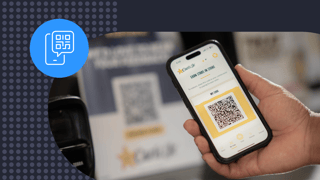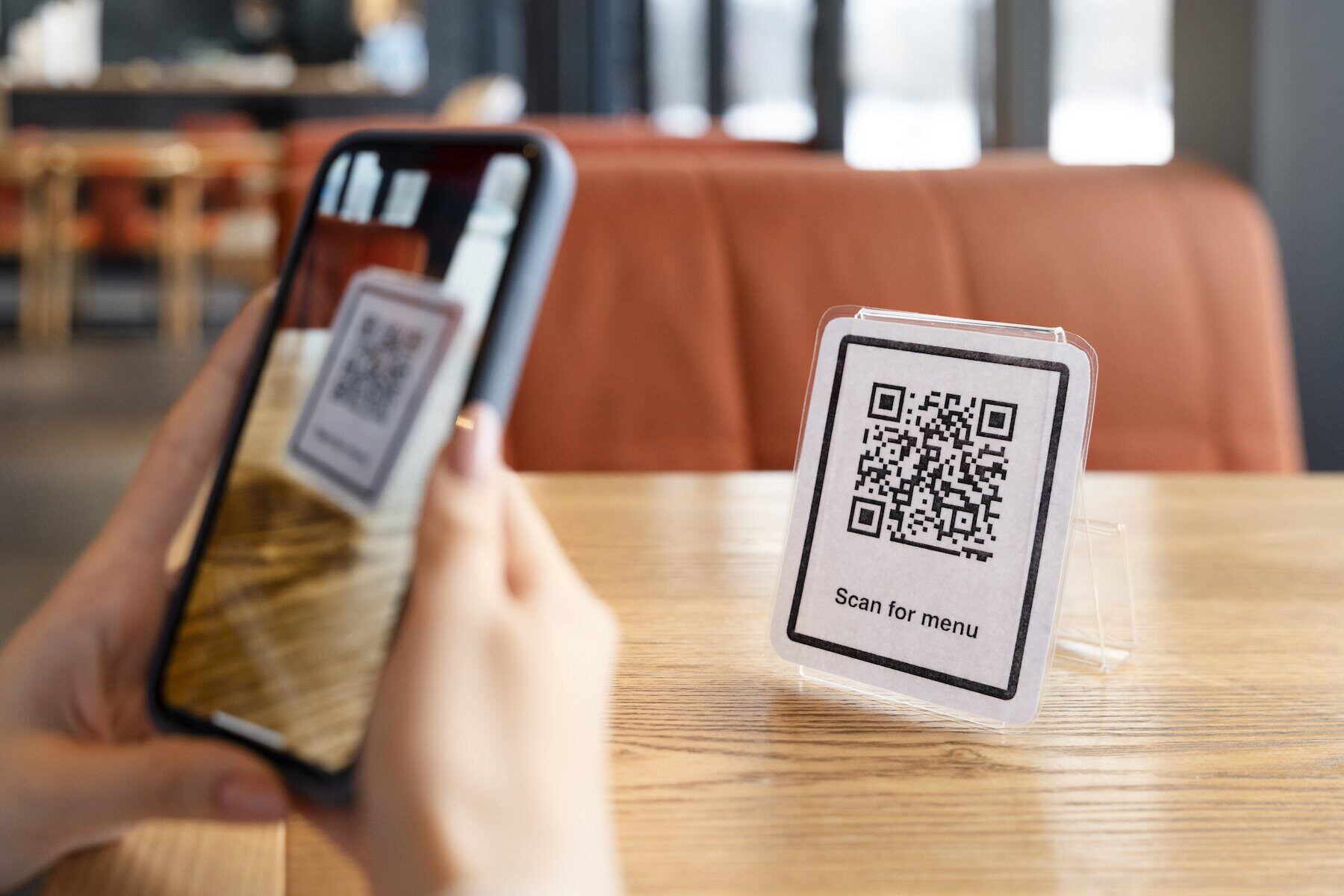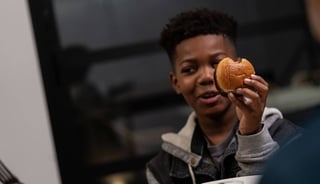
This article outlines:
What is QR code ordering and how does it work?
5 ways restaurants can benefit from QR code ordering
How to get set up with QR code ordering
The pandemic made QR codes ubiquitous, particularly in the hospitality industry. Contactless menus and payment quickly went from being a safety precaution to a staple at many restaurants.
While diners had to initially adapt out of necessity, many have come to accept and even embrace QR codes for their convenience. Now that dine-in is back in full force, restaurants can further leverage QR codes to optimize operations and create a seamless guest experience.
What is QR Code Ordering?
QR code ordering enables guests to scan a QR code to access a restaurant’s menu, place an order, and pay for a meal, all from their own mobile devices. The QR code is typically found on a tabletop sign or sticker affixed to a table inside the restaurant.
With QR code ordering, guests have the flexibility to choose how, when, and what to order—without having to stand in line or wait for a server. Additionally, guests benefit from faster service, more control over order accuracy, the ability to easily add items to their meals, and quickly pay when they’re finished.
QSR and fast-casual brands like Nando’s offer QR code ordering inside some of their restaurants and the reception from guests has been overwhelmingly positive.

5 Ways Restaurants Can Benefit from QR Code Ordering
Though QR code ordering is a guest-driven dining experience, the technology can support restaurants in a myriad of ways—from financial, to staffing, to data collection, and more. Here are five examples that come directly from Olo data and feedback from restaurant brands that we support.
1. Revenue Boost
According to Olo data and industry data at large, check averages increase by $2-4, or roughly 12%, when guests order from a digital interface. Why? Because guests can spend more time perusing the menu, easily add and pay for items, and indulge in add-ons without fear of judgment.
As a bonus, generally, there are limited costs for restaurant brands to get started with QR code ordering (keep scrolling for setup details).
Check averages increase by $2-4, or roughly 12%, when guests order from a digital interface.
2. Increased Staff Efficiency and Satisfaction
By eliminating unnecessary touch points between restaurant employees and guests, QR code ordering optimizes staffing needs. Fewer trips to and from tables mean brands have the freedom to reallocate employees to greet guests, prepare food, etc.
When guests have the power to determine exactly what and when to order, their satisfaction tends to go up, which can lead to an increased tip income of $1.50 per hour on average.
Higher pay, less stress, and the freedom to put in more face time with guests can boost job satisfaction and retention of restaurant employees.
Related: How To Prepare For Table Service 2.0
3. Improved Order Accuracy
Since QR code ordering puts guests in control of placing and paying for orders directly from their phone, communication issues with staff often decrease, and order accuracy increases. Fewer mistakes mean less food waste and a smoother experience for all.
4. Faster Table Turnover
Restaurant guests often wait anywhere from 15 to 20 minutes for their check to arrive at the table. It’s a common pain point that can easily be resolved with QR code ordering.
When guests aren’t waiting for a server to order or pay for their meal, orders get fulfilled faster and there’s less delay for incoming guests. In other words, with QR code ordering, more people can ultimately be served—a win-win for the restaurant brand and its guests.
5. Data Collection
Restaurant brands that leverage QR code ordering can see up to a 5x increase in first-party data collection compared to traditional dining experiences.
While historically dine-in guests have been difficult to identify and learn from, QR code ordering enables brands to better understand dine-in guests’ preferences and behavior, as well as grow their marketable database, by digitizing every transaction.
When brands analyze and act on those insights, they can create Digital Hospitality at every touchpoint and maximize lifetime value (LTV) through personalized service, 1:1 marketing, and more.

Getting Set Up with QR Code Ordering
Unlike some restaurant technologies, QR code ordering is generally quick to stand up for brands that already have online ordering and can be very cost-effective. In most cases, no hardware is needed since the ordering platform is a guest’s mobile device. The only out-of-pocket costs include training employees, setting up QR codes at each table, and developing promotional materials.
To boost awareness, educate guests, and encourage the adoption of QR code ordering, brands should display positive, straightforward messaging in and around each restaurant. Eye-catching door and window decals, signs in traditional ordering areas, table displays, and even staff T-shirts or buttons, are great ways to get the word out at each location. And don’t forget about online—a restaurant website, social media, and email marketing are important channels for educating guests.
To find out more about QR code ordering and how it can support your restaurant operations, visit our Ordering page and contact us.
Photo Credit: Alba Lantigua from Unsplash and Blue Bird from Pexels
